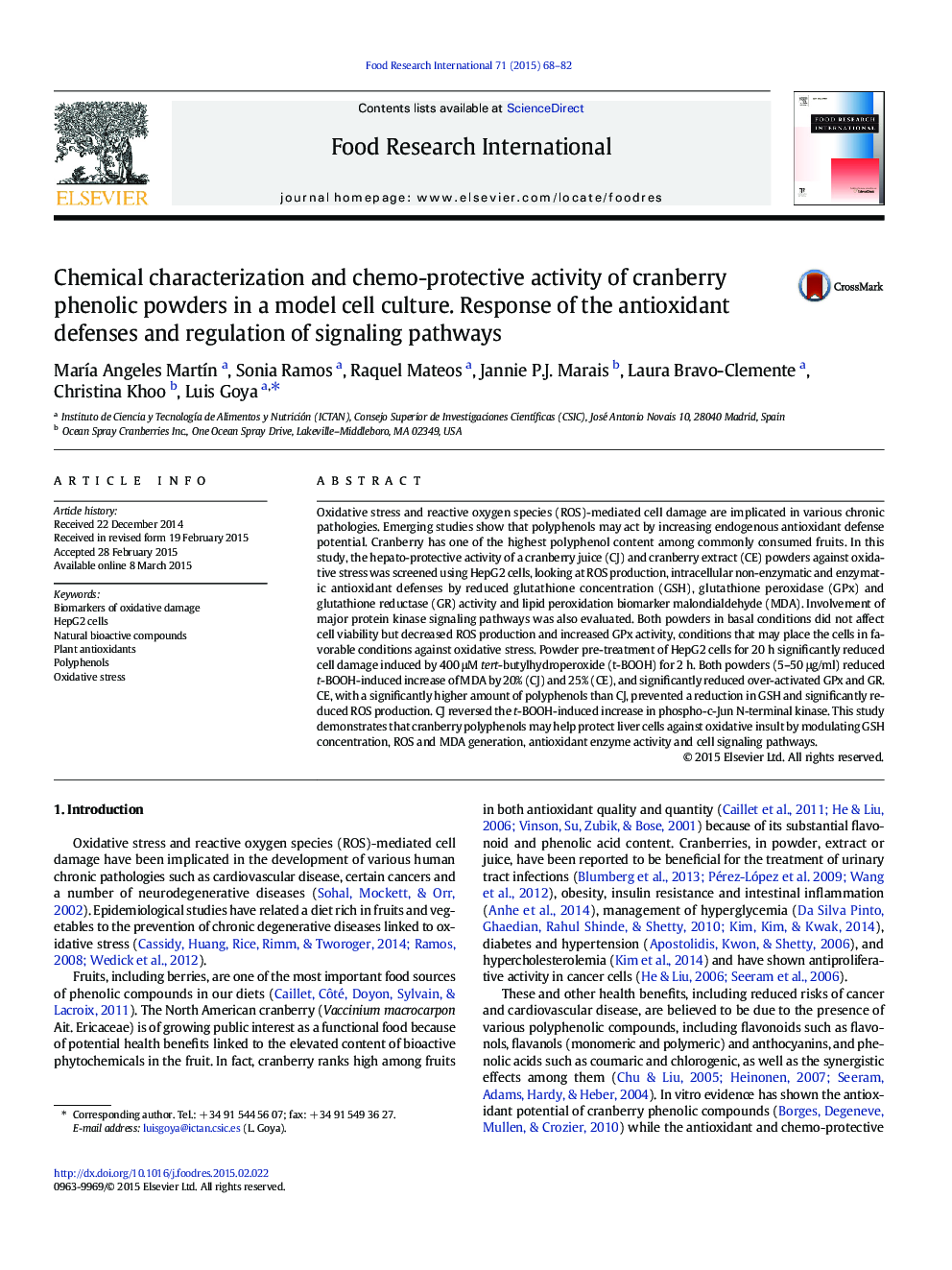| Article ID | Journal | Published Year | Pages | File Type |
|---|---|---|---|---|
| 4561541 | Food Research International | 2015 | 15 Pages |
•Phenolic-rich powders from cranberry protect liver cells from oxidative stress.•Phenolic-rich powders from cranberry reduce cell free radical activity.•Phenolic-rich powders from cranberry enhance cell antioxidant defenses.•Phenolic-rich powders regulate protein signaling pathways in liver cells.
Oxidative stress and reactive oxygen species (ROS)-mediated cell damage are implicated in various chronic pathologies. Emerging studies show that polyphenols may act by increasing endogenous antioxidant defense potential. Cranberry has one of the highest polyphenol content among commonly consumed fruits. In this study, the hepato-protective activity of a cranberry juice (CJ) and cranberry extract (CE) powders against oxidative stress was screened using HepG2 cells, looking at ROS production, intracellular non-enzymatic and enzymatic antioxidant defenses by reduced glutathione concentration (GSH), glutathione peroxidase (GPx) and glutathione reductase (GR) activity and lipid peroxidation biomarker malondialdehyde (MDA). Involvement of major protein kinase signaling pathways was also evaluated. Both powders in basal conditions did not affect cell viability but decreased ROS production and increased GPx activity, conditions that may place the cells in favorable conditions against oxidative stress. Powder pre-treatment of HepG2 cells for 20 h significantly reduced cell damage induced by 400 μM tert-butylhydroperoxide (t-BOOH) for 2 h. Both powders (5–50 μg/ml) reduced t-BOOH-induced increase of MDA by 20% (CJ) and 25% (CE), and significantly reduced over-activated GPx and GR. CE, with a significantly higher amount of polyphenols than CJ, prevented a reduction in GSH and significantly reduced ROS production. CJ reversed the t-BOOH-induced increase in phospho-c-Jun N-terminal kinase. This study demonstrates that cranberry polyphenols may help protect liver cells against oxidative insult by modulating GSH concentration, ROS and MDA generation, antioxidant enzyme activity and cell signaling pathways.
